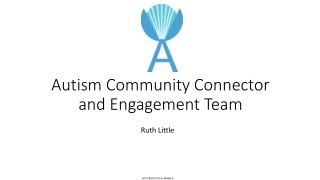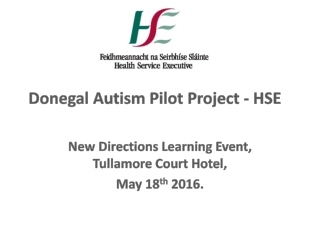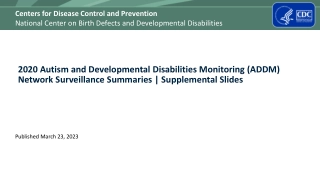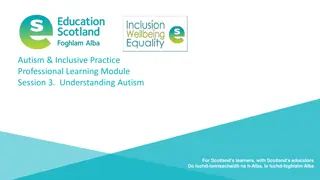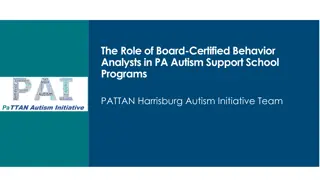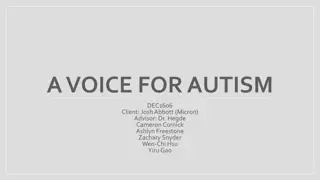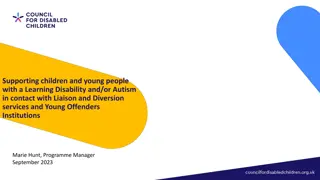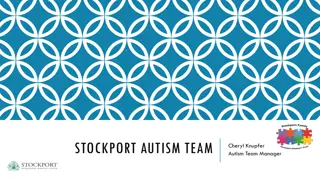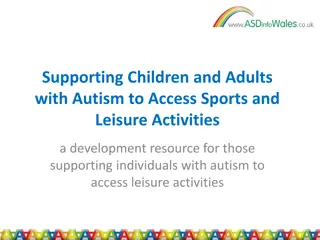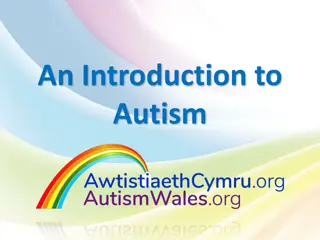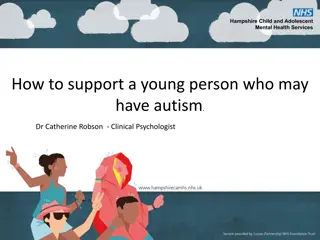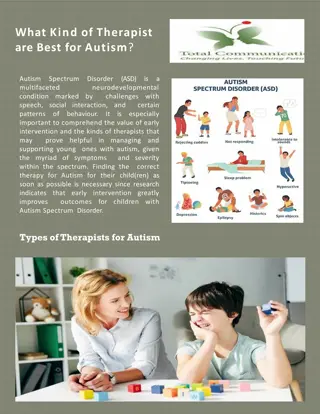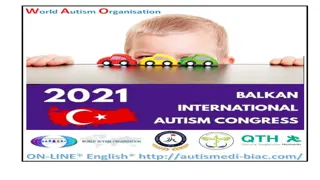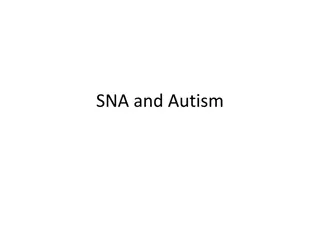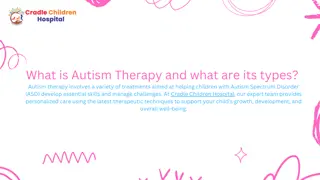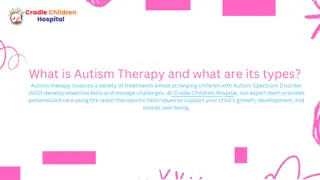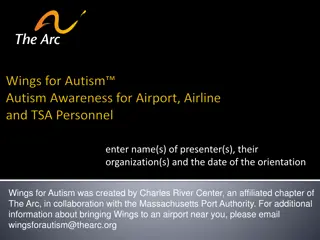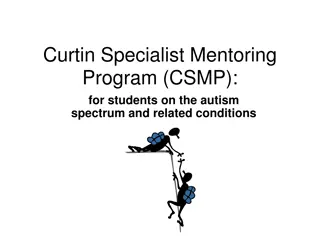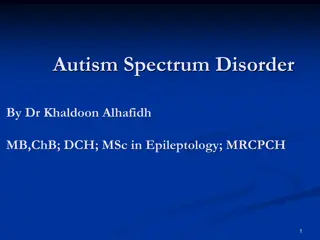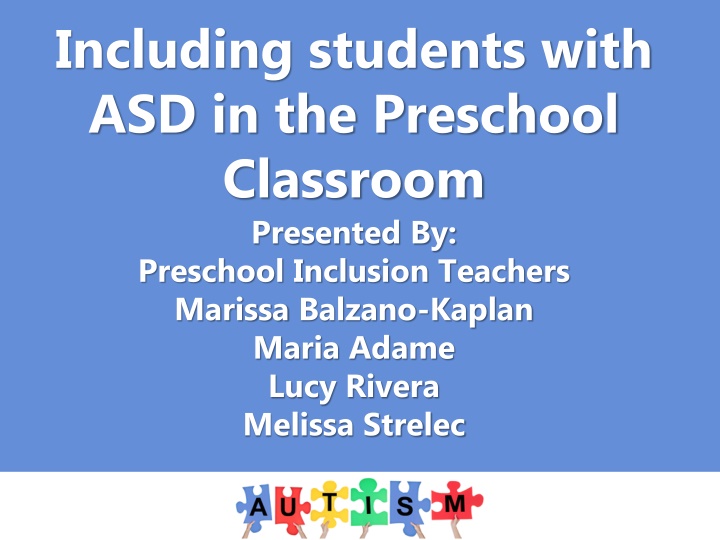
Inclusive Practices for Students with ASD in Preschool Classroom
Learn about effective strategies for including students with Autism Spectrum Disorder (ASD) in preschool settings. Get insights on understanding the spectrum of ASD, utilizing classroom tips, and addressing common concerns. Discover facts, figures, and famous individuals with ASD, along with engaging activities to enhance awareness and support for children with ASD.
Download Presentation

Please find below an Image/Link to download the presentation.
The content on the website is provided AS IS for your information and personal use only. It may not be sold, licensed, or shared on other websites without obtaining consent from the author. If you encounter any issues during the download, it is possible that the publisher has removed the file from their server.
You are allowed to download the files provided on this website for personal or commercial use, subject to the condition that they are used lawfully. All files are the property of their respective owners.
The content on the website is provided AS IS for your information and personal use only. It may not be sold, licensed, or shared on other websites without obtaining consent from the author.
E N D
Presentation Transcript
Including students with ASD in the Preschool Classroom Presented By: Preschool Inclusion Teachers Marissa Balzano-Kaplan Maria Adame Lucy Rivera Melissa Strelec
Disclaimer No one is an expert in Autism. Only medical professionals are capable of diagnosing a child with Autism Spectrum Disorder.
Goals & Objectives Facts & Figures of Autism Understand the spectrum of Autism Tips to use in the classroom Q&A about teacher and classroom concerns
Opening Activity Define and describe Autism? On a post-it, write down the first words that come to mind Video What is Autism?
Facts & Figures of ASD There is NO medical detection for Autism Effects 1 in 59 children in the USA today 1 in 37 boys 1 in 159 girls Affects all Ethnic and socioeconomic groups Minority groups tend to be diagnosed later and less often. Boys are 4x more likely to be diagnosed than girls. Most children are diagnosed after the age of 4 however can be diagnosed as early as age 2. Early interventions provide the best opportunity to support healthy development and deliver life long benefits.
ASD Fun Facts Famous People in History Dan Aykroyd Comedic Actor Hans Christian Andersen Children s Author Tim Burton Movie Director Charles Darwin Naturalist, Geologist, and Biologist Emily Dickinson Poet Albert Einstein Scientist & Mathematician Bill Gates Co-founder of the Microsoft Corporation Thomas Jefferson Early American Politician Steve Jobs Former CEO of Apple Michelangelo Sculptor, Painter, Architect, Poet Wolfgang Amadeus Mozart Classical Composer Sir Isaac Newton Mathematician, Astronomer, & Physicist Jerry Seinfeld Comedian Andy Warhol Artist
Activity At your tables, have a brief 5 minute discussion about the facts and figures just presented. What have you heard or read about ASD? Do you have experience with someone who has been diagnosed with Autism? Have you noticed a trend in your classroom?
Autism Spectrum Savants/ Gifted Low Functioning Sensory Driven
Sensory Overload Be mindful of sensory concerns Sight Sounds Touch Smells Tastes Balance Body Awareness
Videos Autism Speaks-Sensory Video ASD- Sensory Overload Briefly discuss the videos then write down all of your sensory needs. What bothers you?
BREAK TIME! 10 Minute break
Key Indicators Social Communication Limited use of gestures Delay in speech/babbling Odd sounds with unusual tones Social Interactions Difficulty making eye contact Lack of warm/joyful expressions Does not respond to name being called Does not share enjoyment or interests with others Repetitive Behaviors and Restricted interests Unusual movements with hands, fingers, or whole body Rituals such as lining things up or repeating over and over Excessive interests in particular objects, actions, or activities
Tips for the Classroom Get to know your students There are no instructional strategies that are Autism specific. Give extra time Be mindful that students may know and understand more then we think. Never talk negatively in front of the students
Tips for the Classroom Create a structured environment Routine! Routine! Routine! Minimal deviations from the norm Keep it simple Give reminders
Tips for the Classroom Make communication easier Use direct language Sign Language Simple statements Gestures/transition signals Communication cards Visuals Sentence fillers Songs
Tips for the Classroom Use Visuals Daily routine Entering the classroom Handwashing Bathroom routines Visual timers Labeling materials in all parts of the classroom
BREAK TIME! 10 Minute break
Tips for the Classroom Encourage Social Interactions Social emotional learning/ feelings Making eye contact Turn taking Shared control Conflict resolution Peer to Peer
Tips for the Classroom Structured Activities Short and simple Differentiated instruction to meet child's needs for all activities. Model Break down into simple steps *ALLOW BREAKS* Use HOH to guide Repetition
Q & A What s still on your mind? Do you need more clarification on anything specific?
Resources Signs of Autism Autism Speaks Sesame Street & Autism

